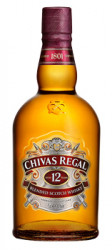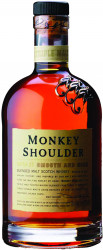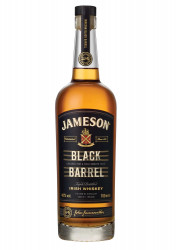Finding a whisky that rocks your world is all a matter of taste – here's all you need to know to get the most from it
Bourbon, single malt, blended, Scotch, Irish… the world of whisky is vast and wonderful; one where a little know-how will serve you well. With so many different expressions of this beloved spirit on the shelves, a bit of an understanding of the terms surrounding the amber nectar will help navigate you towards your preferred flavour profile.
Here's an insider's guide.
Pleasing the palate
Whisky is distinguished by a few key things – place of origin, types of grain used, and the malting, blending and ageing processes involved in its production, all of which affect a flavour profile. Rachael Thomson, co-owner of New Zealand’s award-winning Thomson Whisky, suggests thinking about the spirit much like food. “Are you a sweet tooth? Do you have a savoury palate? This will give you a hint about whether you’d like a rich, dessert-like sherry-cask whisky that might offer notes of dried fruit, toffee, chocolate,” she says. “Or if your weakness is savoury foods, such as cheese boards, smoked meats and salty foods, a robust smoky whisky may well be your thing.”
Start a conversation
The bottle itself will yield clues. For instance, if the savoury route appeals, heavily peated whiskies, which produce that unmistakable smoky aroma and taste, are often associated with Islay in Scotland. But it’s certainly not the only place making them. The good news is that smoky whiskies from other locations are often sign-posted reasonably well on the packaging, with the words ‘peat’ or ‘smoke’ appearing loud and proud.
Rachael says it can be a little harder to decipher flavour from packaging alone when it comes to the more delicate, nuanced whiskies. But there are clues. For example, ex-bourbon barrel maturation will give smooth, coconut, vanilla notes. She also points out that some of the biggest flavour leads come from whether the malt is smoked and what cask the whisky has matured in.
“Read the tasting notes on the bottles as well, as most brands give a good indication of what they believe you’ll find within the bottle,” Rachael advises. “And don’t be afraid to ask someone in-store. Whisky folk love nothing more than a conversation about flavour – explaining what you like and asking for a recommendation is probably the best way to navigate the whisky shelves.”
Take a sniff
When trying a tipple for the first time, most experts agree that sampling it neat – at least for the first sip – is a good idea. Take a sniff first, but be warned, whisky’s alcohol content is a lot stronger than wine – usually sitting somewhere between 40% to 46% ABV – so sticking your head in the glass and inhaling deeply is not wise. Bring your nose to the glass slowly to discern the aromas.
There’s an argument to swish that first sip around the mouth. It will likely be intense but may help prepare the palate for more flavour detection. You can then opt to add a drop or two of filtered room-temperature water and try it again.
“The water opens out the flavour in a new way, and you will definitely taste the difference, with more flavours being accessible on the palate. It can also loosen up the flavour profile of a cask-strength whisky and make it less strong to sip,” says Rachael.
Once you’ve tasted a whisky, how you then go on to enjoy it is a matter of preference. Of course, you’ll find opinionated whisky buffs who purport that adding ice to a glass is sacrilege – some will scoff at even adding water, yet others will insist a drop of water is the key to appreciating a whisky’s nuances.
Have it your way
Matt Johns of Pokeno Whisky is no stranger to being asked about the “correct way” to drink whisky. “Yes, if you add a drop of water, it will release the notes. Yes, if you drop ice into it, will it kill some of the flavours at the start and then re-open them. For me, it’s about drinking whisky as you enjoy it; I want consumers to enjoy what we’re distilling, and if they want to do it a certain way, then I’m happy for them to do that.”
Rachael agrees: “There's no ‘right’ way to enjoy something, and I’m an advocate of people feeling free to drink their whisky the way they like to, no questions asked. My great-grandmother liked milk with hers, and others like it with ice.” There’s no shame in admitting that drinking whisky straight is not for you, and while whisky and milk might not float your boat, don’t be shy to experiment with the fantastic array of cocktails to which whisky lends itself. As Matt says: “Whisky has evolved, and today’s bartenders and at-home cocktail-makers are doing some fantastic work with it.”







